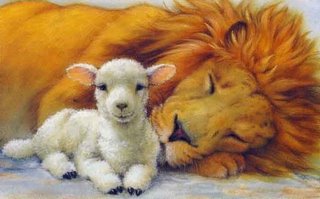

Judy's post reminded me of the exhibition at The Museum of Russian Art my sister in law told me about last fall. . . one, she knew I would want to visit. The exhibit ends January 14th, so, Carol and I made plans to go yesterday. Judy, Jan, and Heather were planning to meet at the same time. So. . . it was . . . we happened to be together.
ICONS ~ WINDOWS TO HEAVEN
500 Years of IconographyI prepared myself by reading the following ahead of time:No one has ever seen God.God has neither shape, nor dimension, nor color, nor volume. However, in order to reveal himself, to tell his story, God has given us an image, an icon, which does have form and color and measure and volume. This icon is the human being, man and woman together.
So God created humankind in his image,in the image of God he created them;male and female he created them. (Genesis 1:27)
The icon makes visible the Invisible. Thus, the real icon is the human being, of whom Jesus Christ is the prototype. He is the visible image of the invisible God. All of Scripture is imprinted in Him, in His body, in His being, in His very existence.
Scripture, revelation, is not ink on white paper. Rather, it is imprinted and recorded in our flesh. The Word would continue to exist even though one day all Bibles were to be burned or disappear. And this revelation is the Word:
"Hear, O Israel!" (Dueteronomy 6:4). But this Word not only made Itself heard, it also made Itself visible, for this Word became incarnate. The Word is not
something, the Word is Someone--Someone who let Himself be heard, who let Himself be seen, who gave Himself as food to be eaten. If we stop at just hearing the Word, we remain at the level of the Old Covenant; the reality of the Incarnation does not touch our being.
From this arises the importance of an icon. An icon helps us become aware that the Word is not just a series of words or sounds. The Word is a relationship. If we talk without communicating with the other, without communication with God, without giving of ourselves, without communicating ourselves, we are just making noises.
Yet, the Word is Somone, the Word is a Face, the Word is an Image:
"For he spoke, and it came to be; he commanded, and it stood firm." (Psalm 33:9)
An icon breaks our boundaries and we become aware that we speak even without using words. We talk by a look, by a smile, by a gesture, an attitude; we talk by our very existence.
God is Word, and God is Silence. The icon also speaks by silence. It grounds us in that silence. It grounds us in contemplation since it communicates all of Revelation to us, in silence by our viewing. In Hebrew and Arabic, the word for eye is "ain," which also means source or font. We drink in all of Scripture, all of Revelation by our looking. All of the Word, the Face of the Other, flows into us, and we flow into the Word. The Word is a Relationship, it is Comm-Union.
I must admit I was a bit disappointed. I was hoping for more words
(smile) I struggled with the icons in the exhibit . . . to see the face of Christ. They were beautiful . . . and I want to read more about them. Oh, but then . . . we moved on to look at the rest of the museum . . . and my eyes fell into Nikolai N. Baskakov's
Milkmaids, Novella . . . and . . . I saw Him. Look . . . can you see?
God became incarnate so that man might contemplate his face in every face.
So, it was, I contemplated His face in the face of my companions at lunch . . . for me . . .
windows to heaven!Deo Gratias!!!

